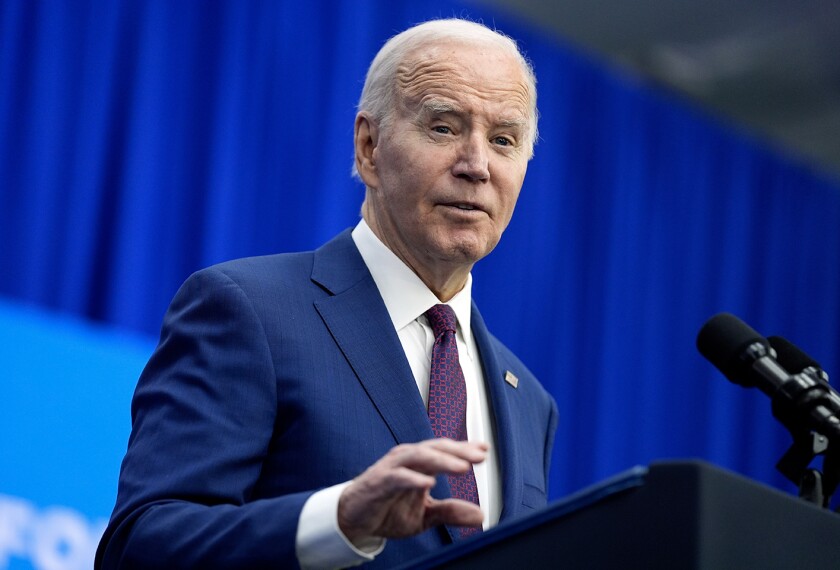Even though an academic handpicked by Ontario’s premier has vindicated school districts’ allegations that the provincial government has been shortchanging them, Ontario refuses to free Toronto—Canada’s largest school system— and other districts from its control.

The president of the University of Guelph, who wrote the government- commissioned report, calls for injecting $1.8 billion into Ontario’s education system.
Critics of the province’s education funding system hailed the findings, which recommend bringing school spending in line with inflation and current teacher-salary rates. They say the report substantiates their long- standing contention that Ontario’s cash-starved schools are floundering.
“It’s an indictment of the funding formula,” said Earl Manners, the president of the Ontario Secondary School Teachers’ Federation.
Declaring victory appears to be premature, however.
As soon as the report came out in December, Premier Ernie Eves pumped an additional $610 million in recurring funds into the education budget. (One Canadian dollar is worth about 65 cents in U.S. currency.)
But a spokesman for the Ontario Ministry of Education said incorrect conclusions were being drawn from the report.
The evaluation proves that the 1998 funding formula is a sound model, said Patrick Nelson, a spokesman for provincial Education Minister Elizabeth Witmer. The Progressive Conservative government and Mr. Eves have pledged to consider the report’s recommendations, but it’s unclear whether they’re prepared to shell out the millions suggested in new programs and increased spending. The premier is expected to unveil his budget proposal next month.
Still, Mr. Nelson noted: “The commitment from the premier and minister is not to let the report sit on the shelf and collect dust.”
‘Deathbed Epiphany’
Some question Mr. Eves’ motives. He was the finance minister in the former government that many critics blame for the steep education cuts. And an election will likely be called within a year.
“He’s trying to say, ‘I’m not the same as my predecessor,’ ” Mr. Manners said. “But the question becomes, is this just because an election is looming, or is he like Scrooge and he has had a deathbed epiphany?”
Ontario’s school funding saga turned into a standoff last fall when school district trustees in Toronto, Ottawa-Carleton, and Hamilton-Wentworth protested the education funding formula by failing to submit balanced budgets to the provincial government. Their defiance led Ontario’s education minister to take over their districts. (“Province Takes Over Toronto Schools,” Sept. 11, 2002.)
Jim Libbey, the chairman of the Ottawa-Carleton school board, said he believes the report’s findings should lead the province to relinquish control of the three school districts. The budget of his 79,000-student district should be balanced with the roughly $20 million in new revenue from the province, he said.
But Mr. Nelson said the report and the district takeovers aren’t directly related. The districts broke the law when they refused to submit balanced budgets, he emphasized. And while the 270,000-student Toronto schools and the 59,000-student Hamilton-Wentworth district now have balanced budgets, he said the local trustees would not resume their leadership until the end of 2003.
‘Inadequate’ Funding
Premier Eves commissioned the Education Equality Task Force not long after he assumed Ontario’s top government position last spring. He tapped Mordechai Rozanski of the University of Guelph to lead the education funding review.
Mr. Rozanski, who directed requests for comment to the Ministry of Education, writes in the report that “almost everyone I heard from said the amount of funding allocated to education in Ontario is inadequate.
“The answer is not to just throw money at education,” Mr. Rozanski writes; “it’s to make strategic investments in the goal of continuous improvement.”
Mr. Rozanski notes that no one advocated reinstatement of the previous funding formula, which relied on a combination of government grants and revenue generated from local property taxes. That system was considered inequitable because school boards with large property-tax bases could raise more money than those with smaller tax bases.
The present school funding system, implemented in 1998, distributes education grants from the Ontario government to the districts on a per-pupil basis. It also took away local school trustees’ authority to raise taxes.
Mr. Rozanski says in his report that the per-pupil funding formula’s current spending benchmarks were set using 1997 costs, however. He said education funding should keep pace with enrollment and cost pressures.
Mr. Rozanski urged the province to increase its education grants over the next three years by $1.1 billion.
Mum on Academic Equity
But more money shouldn’t be the central issue, argues Claudia R. Hepburn, the director of education policy for the Fraser Institute, a conservative policy-research group based in Vancouver, British Columbia.
She said it was ridiculous to expect the province to ante up close to $1.8 billion—an amount she called “extortionate.” Ms. Hepburn contends that money isn’t being spent efficiently.
School spending has climbed annually including a $1 billion increase to $14.8 billion for the 2002-03 fiscal year, according to Mr. Nelson, the Education Ministry spokesman.
Yet a recent analysis of Ontario’s education policies found that as the province adopted a new “university bound"—or college-prep—curriculum and reduced spending, many students were “falling by the wayside.”
Ken Leithwood, the associate dean of research for the Ontario Institute for Studies in Education, based at the University of Toronto, and a co-author of the report released last month, said the province’s education policies often aren’t based on the best research or are poorly implemented.
American politicians and education leaders wax on about student achievement with slogans like “all children can learn” and “no child left behind,” Mr. Leithwood said. But in Ontario, he lamented, talk of academic equity, even in terms of rhetoric, is missing from education debates.
Coverage of cultural understanding and international issues in education is supported in part by the Atlantic Philanthropies.




